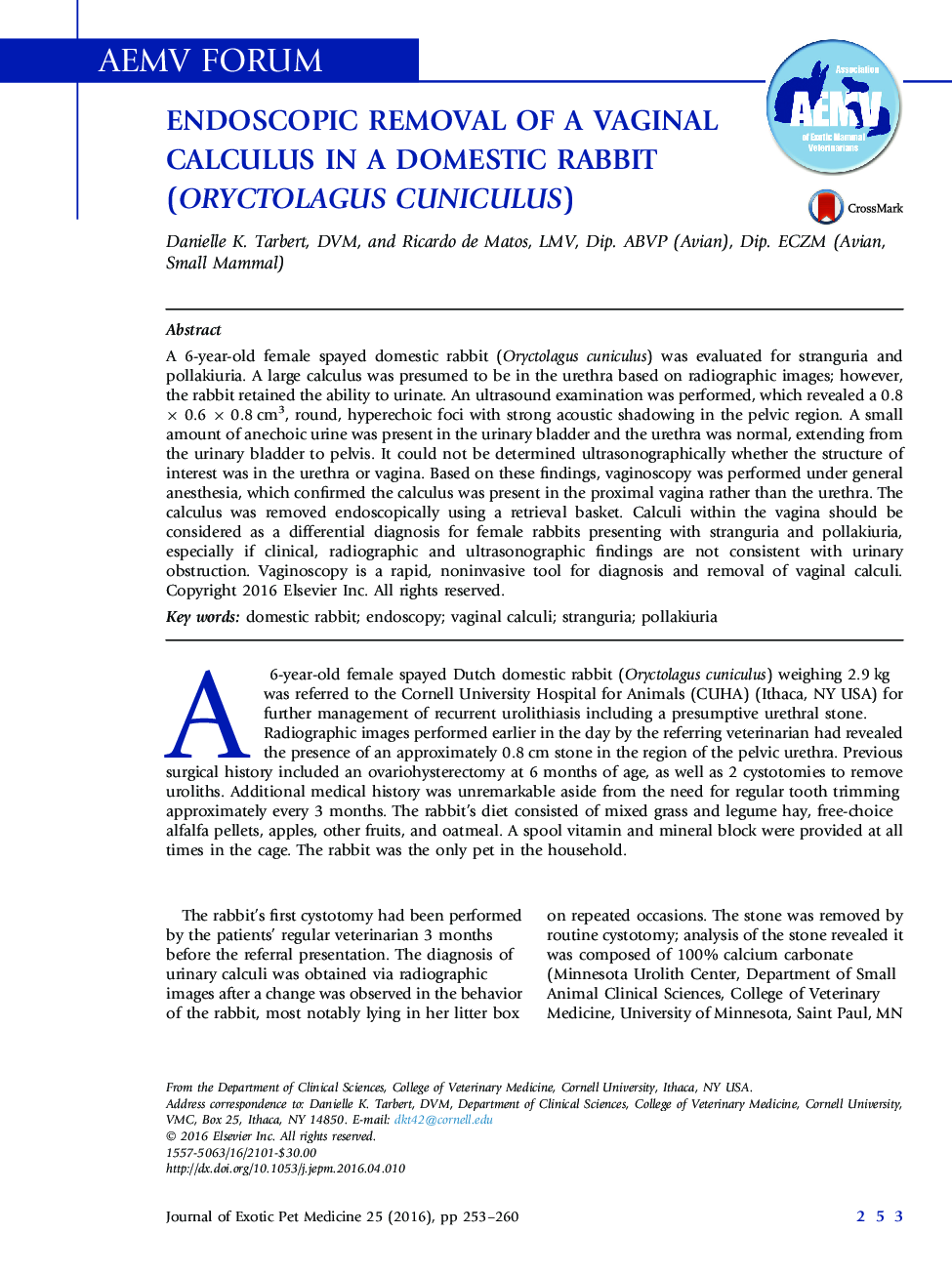| Article ID | Journal | Published Year | Pages | File Type |
|---|---|---|---|---|
| 2396787 | Journal of Exotic Pet Medicine | 2016 | 8 Pages |
A 6-year-old female spayed domestic rabbit (Oryctolagus cuniculus) was evaluated for stranguria and pollakiuria. A large calculus was presumed to be in the urethra based on radiographic images; however, the rabbit retained the ability to urinate. An ultrasound examination was performed, which revealed a 0.8 × 0.6 × 0.8 cm3, round, hyperechoic foci with strong acoustic shadowing in the pelvic region. A small amount of anechoic urine was present in the urinary bladder and the urethra was normal, extending from the urinary bladder to pelvis. It could not be determined ultrasonographically whether the structure of interest was in the urethra or vagina. Based on these findings, vaginoscopy was performed under general anesthesia, which confirmed the calculus was present in the proximal vagina rather than the urethra. The calculus was removed endoscopically using a retrieval basket. Calculi within the vagina should be considered as a differential diagnosis for female rabbits presenting with stranguria and pollakiuria, especially if clinical, radiographic and ultrasonographic findings are not consistent with urinary obstruction. Vaginoscopy is a rapid, noninvasive tool for diagnosis and removal of vaginal calculi.
